
We discuss a new investigation that reveals further ties between the killing of renowned environmental activist Berta Cáceres, Honduran military intelligence and the United States. Cáceres was assassinated one year ago in her home in La Esperanza, Honduras, just before midnight on March 2, 2016. She was the co-founder of COPINH, the Civic Council of Popular and Indigenous Organizations of Honduras. In 2015, she won the prestigious Goldman Environmental Prize for her decade-long fight against the Agua Zarca Dam, a project planned along a river sacred to the indigenous Lenca people. Eight men have been arrested as suspects in Cáceres’s killing, including one active army major and two retired military members. Two of these suspects reportedly received military training in the United States. We are joined by Nina Lakhani, a freelance journalist who has been based in Mexico and Central America for the last four years. Her recent piece for The Guardian is “Berta Cáceres court papers show murder suspects’ links to US-trained elite troops.”
Transcript
AMY GOODMAN: We end today’s show by remembering the renowned Honduran environmental activist Berta Cáceres, who was assassinated a year ago in her home in La Esperanza, Honduras, just before midnight, March 2nd, 2016. Berta Cáceres was the co-founder of COPINH, the Civic Council of Popular and Indigenous Organizations of Honduras. In 2015, she won the prestigious Goldman Environmental Prize for her decade-long fight against the Agua Zarca Dam, a project planned along a river sacred to the indigenous Lenca people.
On Thursday, hundreds rallied outside the Honduran Supreme Court building to demand justice for Berta Cáceres and for the license of the company behind the Agua Zarca Dam to be revoked. Eight men have been arrested as suspects in Berta’s killing, including one active army major and two retired military members. Two of the suspects reportedly received military training in the United States. Also Thursday, here in Washington, D.C., Georgia Congressman Hank Johnson reintroduced the Berta Cáceres Human Rights in Honduras Act, which seeks to withhold U.S. military aid to Honduras until the Honduran government addresses human rights violations by its police and security forces.
We’re turning now to a new investigation that reveals further ties between Berta Cáceres’s killing, Honduran military intelligence and the United States. Joining us from London is Nina Lakhani, a freelance journalist who’s been based in Mexico and Central America for the last four years. Her piece in The Guardian is headlined “Berta Cáceres court papers show murder suspects’ links to US-trained elite troops.”
Nina, welcome to Democracy Now! What are those links?
NINA LAKHANI: So, the U.S., over the last decade or so, has really focused a lot of its military training in Central America on special forces. And we know that, over a period of, I think, five years, 2004 to—sorry, 2008 to 2014, the U.S. went 21 times to Honduras to train their special forces. Two of the military men who have been charged with her murder and the attempted murder of Gustavo Castro were special forces. So, Major Mariano Díaz, who was—he is a veteran special forces officer, at least seven years, according to his military records, and also Henry Hernández, Sergeant Henry Hernández, who had left the military in 2013, but he was special forces, three years in the special forces, and worked under the direct command of Major Díaz.
AMY GOODMAN: And what about Douglas Giovanny Bustillo?
NINA LAKHANI: Bustillo, he did—he did receive some training. Just before—you know, as a cadet, I believe. Just before he finished his initial military training, both him and Diaz, who went into the military together, both went to the U.S. to receive training courses. Bustillo was—you know, he did some early training in the School of Americas, I think, back in 1997, it was.
AMY GOODMAN: So talk about the evidence that you’ve seen, from text messages to phone calls. And if you can recreate for us what you think took place?
NINA LAKHANI: So, the evidence really points to, I think, you know, a very well-planned military operation, really, that took place that night. What we know from witnesses is that there is a police and military checkpoint as you come into Esperanza. And that night, many witnesses have told me and other investigators that there was no one there that night. There was no one at the base that night. We know from phone records and we know from testimony that Hernández and Bustillo, who knew each other from working in private security, so they, in the months leading up to Berta’s assassination, had been working together in private security. We know that they were in La Esperanza at least three times in the weeks leading up to her murder. And so, the way that the—at least four people were there that night. Hernández admits to being there. And at least three other civilians, who are under—who have been accused of the murder, are placed at her house because of telephone analysis.
They went in. They knew what they were doing. They knew where they were going. You know, all the evidence points to that the house, inside and out, had been under surveillance, you know, that they’d been there several times. Her house was sort of set back from the main gate. You know, it was a guarded entrance. It was a private community. There was a guard there that night who—you know, it’s very likely they had communication with him—I’ve met with him before—because they came in. It was very dark. It’s an isolated place. They went in. They knew where the door was. They knew where she would be sleeping. So, the evidence points to that, you know, her house and the area surrounding it had been surveyed, had been studied beforehand, you know. And all of that points to, you know, really like a military-type operation. Hernández is the one military person that, you know, is placed there that night. Like I say, he was special forces. He had worked under Díaz. And he was a highly—you know, he had been a decorated sniper, you know? It’s not clear whether he pulled the trigger that night at all, but it would appear that he was in charge of the operation on the night.
AMY GOODMAN: And why would they want—
NINA LAKHANI: But he was—you know, he’s a very—he’s a low-level—he was a low-level military officer, like I say, and he rose to the rank of sergeant. And, for example—
AMY GOODMAN: Nina, why would they want—why would they want Berta Cáceres dead, in this last minute we have?
NINA LAKHANI: I don’t think the people under arrest probably did. You know, I don’t—you know, she was—the context of Berta’s death, you know, that she was the most well-known activist, not only in Honduras, but probably in the Americas, at the time of her murder, you know? None of the individuals who are under arrest, none of the eight, had anything personal to gain from her being killed. And the idea that someone of her—you know, someone as celebrated as her could be murdered without at least the implicit knowledge of people higher up in the armed forces or even the government and the company, I think, is highly improbable. No one in that—none of the eight who are under arrest had anything personal to gain.
AMY GOODMAN: But the government? And has the U.S. been held accountable?
NINA LAKHANI: No, I mean, I think—you know, I think the U.S. wouldn’t—I don’t think the U.S. government would—you know, they wouldn’t admit to bear any responsibility to Berta’s assassination. You know, I think it’s important to remember, I interviewed her in 2013 just around the elections, and she was publicly denouncing the fact that she had been told and had been made aware that her name appeared at the top of a military hit list, in which I think there were 16 other—she was one of 16 activists. She was telling people [inaudible]. You know, she publicly denies—I looked into that at the time, and I—
AMY GOODMAN: We’re going to continue this conversation after the broadcast, and we’ll post it online. Nina Lakhani, thanks so much for joining us.

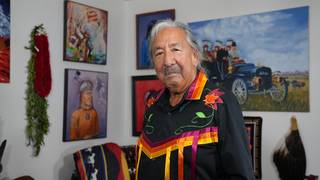


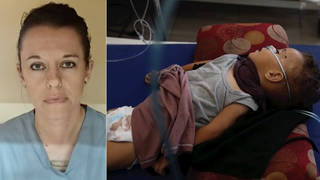

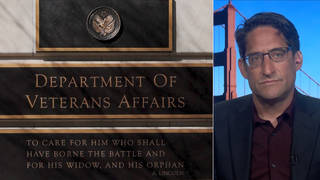
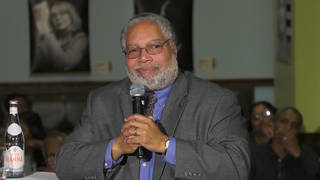


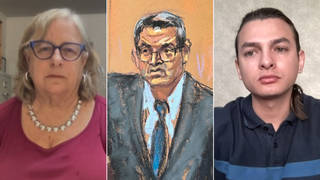
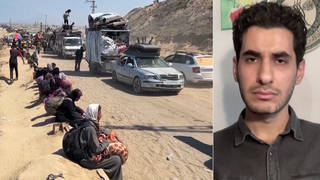
Media Options